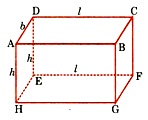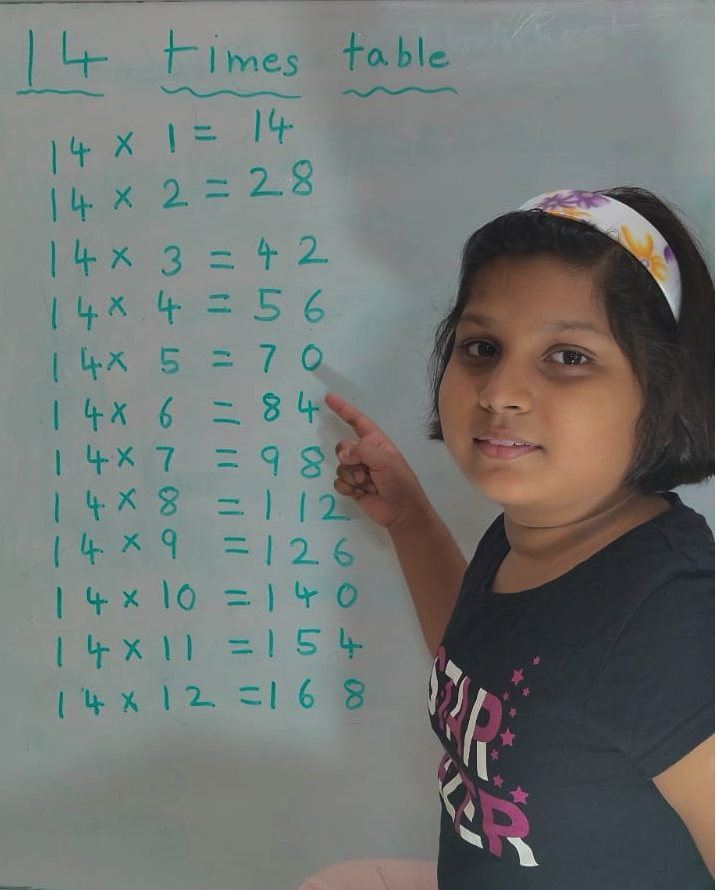Volume of Cubes and Cuboids
In volume of cubes and cuboids we will discuss how to calculate volume in different questions.
What is a Volume?
The volume of any 3-dimensional solid figure is the measure of space occupied by the solid. In case of a hollow 3-dimensional figure, the volume of the body is the difference in space occupied by the body and amount of space inside the body.
We also come across different hollow objects in our daily life. These hollow objects can be filled with air or liquid that takes the shape of the container. Here, the volume of the air or the liquid that the interior of the hollow object can accommodate is called the capacity of the hollow object.
Thus, the measure of space an object occupies is called its volume. The capacity of an object is the volume of substance its interior can accommodate.
● The units for measuring volume are cubic units, i.e., cm², m², etc.
● The volume can be measured in litres or milliliters. In such cases, volume is known as capacity.
Standard Unit of Volume:
Volume is always measured in cubic units. The standard unit volume is 1 cm³ but there are various other units of measurement of length like m, dm, dam, etc., so we have many other standards of measurement of volume.
Let’s observe the chart to understand the relation between the various units of volume.
Cuboid:
A cuboid is made of six rectangular regions called faces. It has 6 faces. They are ABCD (top face), EFGH (bottom face), ABGH (front face), DEFC (back face), ADEH and BCFG are side faces.
Thus, a cuboid is made up of 3 pairs of congruent rectangular faces (top, bottom); (front, back); (side face).
Face EFGH is called the base of the cuboid.
Front face ABGH, back face DEFC and side faces ADEH and BCFG are called the lateral faces of the cuboid.
Any two faces other than opposite faces meet in a line segment which is called an edge of the cuboid. The cuboid has 12 edges AB, BC, CD, DA, EF, FG, GH, HE, AH, BG, DE and CF. The three edges meet at a common point called the vertex. A cuboid has 8 vertices, namely A, B, C, D, E, F, G and H.
Now we will discuss about the volume of cubes and cuboids.
Volume of cuboid:
Let l, b, h represent length, breadth and height of the cuboid.
Area of the rectangular base EFGH of the cuboid = l × b.
Volume of the cuboid = (Area of base) × (height of the cuboid) = (l × b) × h = lbh
Let us consider a cuboid of length ‘l’, breadth ‘b’ and height ‘h’.
Then the volume of the cuboid is given by …………
● Volume = length × breadth × height
● Length of cuboid = Volume/(breadth × height)
● Breadth of the cuboid = Volume/(length × height)
● Height of the cuboid = Volume/(length × breadth)
Note:
While finding the volume of cuboid, length, breadth and height must be expressed in the same units.
Volume of cube:
It is a special type of cuboid whose length, breadth and height are equal. So, the volume of the cube whose edge is l is expressed as ……….
Volume of the cube = l × l × l = l³
Note:
If the length of the cube or the edge is 1 unit, then it is referred to as 1 unit cube.
● Volume and Surface Area of Solids
Worked-out Problems on Volume of a Cuboid
7th Grade Math Problems
8th Grade Math Practice
From Volume of Cubes and Cuboids to HOME PAGE
Didn't find what you were looking for? Or want to know more information about Math Only Math. Use this Google Search to find what you need.
Recent Articles
-
Vertical Subtraction | Examples | Word Problems| Video |Column Method
Mar 22, 25 05:20 PM
Vertical subtraction of 1-digit number are done by arranging the numbers column wise i.e., one number under the other number. How to subtract 1-digit number vertically? -
Worksheet on 11 Times Table | Printable Multiplication Table | Video
Mar 22, 25 05:08 PM
Worksheet on 11 times table can be printed out. Homeschoolers can also use these multiplication table sheets to practice at home. -
Worksheet on 10 Times Table | Printable Multiplication Table | Video
Mar 21, 25 03:46 PM
Worksheet on 10 times table can be printed out. Homeschoolers can also use these multiplication table sheets to practice at home. -
5th Grade Prime and Composite Numbers | Definitions | Examples | Math
Mar 21, 25 12:18 AM
5th grade prime and composite numbers -
14 Times Table | Read and Write Multiplication Table of 14| Video
Mar 20, 25 04:03 PM
In 14 times table we will learn how to read and write multiplication table of 14. We read fourteen times table as:One time fourteen is 14 Two times fourteen are 28 Three times fourteen are 42







New! Comments
Have your say about what you just read! Leave me a comment in the box below. Ask a Question or Answer a Question.